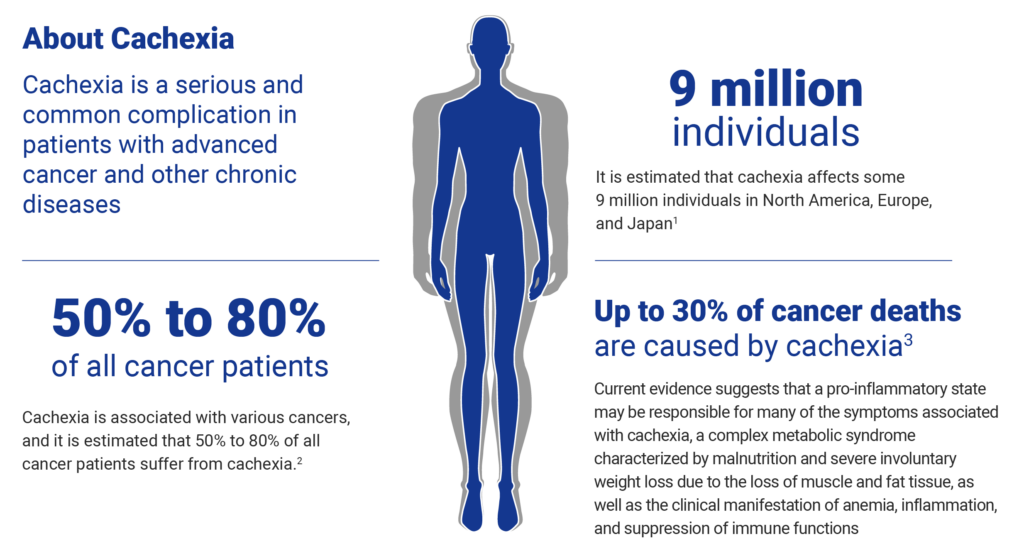
AV-380 (Anti-GDF15 IgG1 [mAb])
in cancer cachexia
AVEO is developing AV-380 for the potential treatment and/or prevention of cancer cachexia. Preclinical data show that inhibition of GDF15 results in a switch from catabolism to anabolism, suggesting that GDF15 inhibition with AV-380 may reverse the effects of cachexia.

AV-380 is our first-in-class, potent, humanized inhibitory IgG1 antibody targeting growth differentiation factor 15 (GDF15). AVEO initiated a clinical trial in cancer patients. For more information go to clinicaltrials.gov.
- GDF15 is a pro-inflammatory cytokine whose elevated circulating levels have been correlated with cachexia in certain types of cancer patients
- Cachexia also affects patients with chronic kidney disease, congestive heart failure, chronic obstructive pulmonary disease, anorexia nervosa, AIDS, and other diseases
AV-380 is an investigational drug and has not yet been approved by the FDA.
References: 1. von Haehling S, Anker SD. Cachexia as a major underestimated and unmet medical need: facts and numbers. J Cachexia Sarcopenia Muscle. 2010;1(1):1-5. 2. Lerner L, Tao J, Liu Q, et al. MAP3K11/GDF15 axis is a critical driver of cancer cachexia. J Cachexia Sarcopenia Muscle. 2016;7(4):467-482. 3. National Cancer Institute. Cancer cachexia: after years of no advances, progress looks possible. Accessed November 19, 2024. https://www.cancer.gov/about-cancer/treatment/research/cachexia
In development
As part of our goal to help patients with cancer live better lives, we are seeking to advance other candidates with the potential to positively impact treatment.
AVEO aims to leverage its existing collaborations and partnerships, as well as enter into new strategic collaborations and partnerships to continue to advance each of its product candidates.